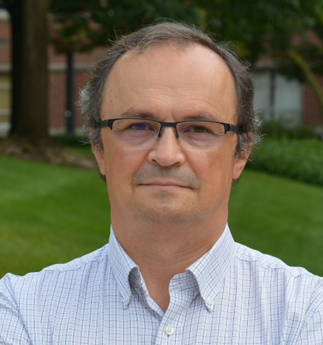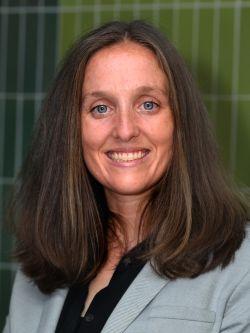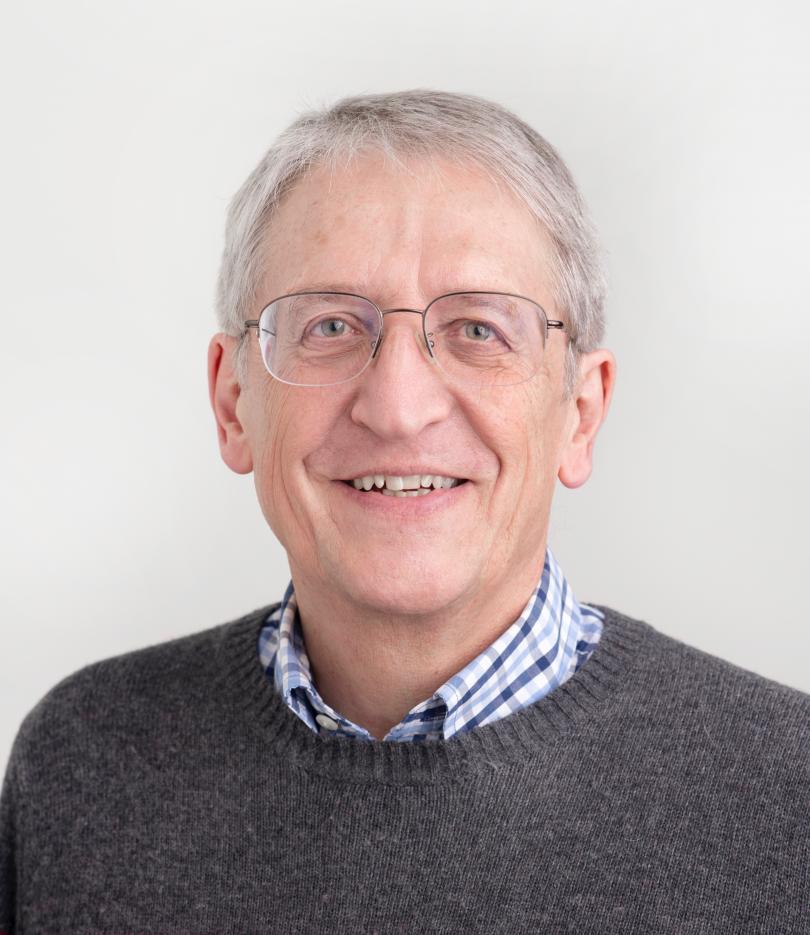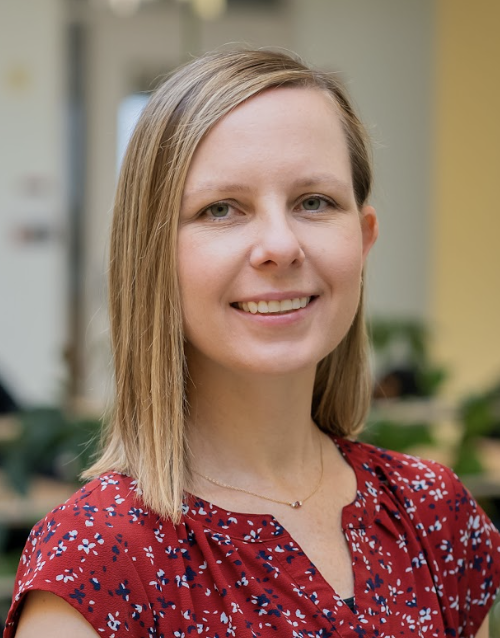Soft PhotoElectroChemical Systems for Energy Conversion and Storage
This lecture series commemorates the life and legacy of Professor Susan Odom, an energetic, productive and driven faculty member in the Department of Chemistry from 2011 to 2021. It features speakers noted for outstanding research in Professor Odom’s fields of synthetic and materials chemistry. Visit this page for more information on the Susan A. Odom lecture series.
Abstract: Organic semiconducting polymers present a versatile platform for energy conversion and storage and sensing devices due to tunable optical and transport gaps, compatibility with electrolytes, and scalability via solution processing. The Center for Soft Photoelectrochemical Systems (SPECS) is an Energy Frontier Research Center that focuses on understanding the fundamental factors that control charge and matter transport processes that underpin energy conversion and storage technologies across spatiotemporal scales in scalable, durable, π-conjugated polymer materials. Within SPECS, we aim to establish design rules for robust photocathode systems that elucidate key structure–property relationships related to charge transport, charge transfer, and operational durability.
Our initial device employs a bulk heterojunction (BHJ) strategy, combining PTB7-Th (hole transport) and N2200 (electron transport) polymers, deposited on passivated ITO and capped with a hydrogen evolution reaction (HER) catalyst (e.g., Pt or RuO₂), all immersed in an acidic electrolyte. Insights from optoelectronic analogs guide our focus toward enhancing chemical and mechanical interfacial stability and enabling selective charge extraction.
Efforts that will be described in this talk include multiple spectroelectrochemical methods and theoretical efforts to reveal the impact of electrochemical doping and ultimately serve as signatures to drive charge transfer reactions such as solar fuel production. Other highlights will include opportunities to functionalize various interfaces to increase rates of hydrogen evolution.
 Bio: Erin L. Ratcliff is a full professor in the School of Materials Science and Engineering and the School of Chemistry and Biochemistry at the Georgia Institute of Technology and holds a joint appointment at the National Renewable Energy Laboratory. She earned a B.A. in chemistry, mathematics,and statistics in 2003 from St. Olaf College in Northfield, Minnesota, and a Ph.D. in physical chemistry from Iowa State University in 2007. After completing a postdoc at the University of Arizona (2007 – 2009), she served as a research scientist and research professor in the Department of Chemistry and Biochemistry (2009 – 2014). She was previously an assistant and associate professor in the Department of Materials Science and Engineering and the Department of Chemical and Environmental Engineering at the University of Arizona (2014 – 2024). She joined the faculty at Georgia Tech in 2024.
Bio: Erin L. Ratcliff is a full professor in the School of Materials Science and Engineering and the School of Chemistry and Biochemistry at the Georgia Institute of Technology and holds a joint appointment at the National Renewable Energy Laboratory. She earned a B.A. in chemistry, mathematics,and statistics in 2003 from St. Olaf College in Northfield, Minnesota, and a Ph.D. in physical chemistry from Iowa State University in 2007. After completing a postdoc at the University of Arizona (2007 – 2009), she served as a research scientist and research professor in the Department of Chemistry and Biochemistry (2009 – 2014). She was previously an assistant and associate professor in the Department of Materials Science and Engineering and the Department of Chemical and Environmental Engineering at the University of Arizona (2014 – 2024). She joined the faculty at Georgia Tech in 2024.
Her group, Laboratory for Interface Science for Printable Electronic Materials, uses a combination of electrochemistry, spectroscopies, microscopies and synchrotron-based techniques to understand fundamental structure-property relationships of next-generation materials for energy conversion and storage and biosensing. Materials of interest include metal halide perovskites, π-conjugated materials, colloidal quantum dots and metal oxides. Current research is focused on mechanisms of electron transfer and transport across interfaces, including semiconductor-electrolyte interfaces and durability of printable electronic materials.
Ratliff was also the director of the funded Energy Frontier Research Center (EFRC) titled Center for Soft PhotoElectroChemical Systems (SPECS) and is currently the associate director of scientific cContinuity for SPECS. She has received several awards for her research and teaching, including the 2023 Da Vinci Fellow and the 2022 College of Engineering Researcher of the Year award at UArizona, The Ten at Ten People of Energy Frontier Research Centers DOE Basic Energy Sciences award in 2019, and Senior Summer Faculty Research Fellow at the Naval Research Laboratory (2020, 2021, and 2024). Her research program has been funded by the Department of Energy Basic Energy Sciences, the Solar Energy Technology Office, Office of Naval Research, National Science Foundation and the Nano Bio Materials Consortium.


 Bio: Dr. Hatzell is an Associate Professor at Princeton University in the Andlinger Center for Energy and Environment and department of Mechanical and Aerospace Engineering. Dr. Hatzell earned her Ph.D. in Material Science and Engineering at Drexel University, her M.S. in Mechanical Engineering from Pennsylvania State University, and her B.S./B.A. in Engineering/Economics from Swarthmore College. Hatzell is the recipient of several awards including the ORAU Powe Junior Faculty Award (2017), NSF CAREER Award (2019), ECS Toyota Young Investigator Award (2019), finalist for the BASF/Volkswagen Science in Electrochemistry Award (2019), the Nelson “Buck” Robinson award from MRS (2019), Sloan Fellowship in Chemistry (2020), and POLiS Award of Excellence for Female Researchers (2021), NASA Early Career Award (2022), ONR Young investigator award (2023) and Camille-Dreyfus Teacher-Scholar Award (2024).
Bio: Dr. Hatzell is an Associate Professor at Princeton University in the Andlinger Center for Energy and Environment and department of Mechanical and Aerospace Engineering. Dr. Hatzell earned her Ph.D. in Material Science and Engineering at Drexel University, her M.S. in Mechanical Engineering from Pennsylvania State University, and her B.S./B.A. in Engineering/Economics from Swarthmore College. Hatzell is the recipient of several awards including the ORAU Powe Junior Faculty Award (2017), NSF CAREER Award (2019), ECS Toyota Young Investigator Award (2019), finalist for the BASF/Volkswagen Science in Electrochemistry Award (2019), the Nelson “Buck” Robinson award from MRS (2019), Sloan Fellowship in Chemistry (2020), and POLiS Award of Excellence for Female Researchers (2021), NASA Early Career Award (2022), ONR Young investigator award (2023) and Camille-Dreyfus Teacher-Scholar Award (2024). 
 Bio: Jean-Luc Brédas received his B.Sc. (1976) and Ph.D. (1979) degrees from the University of Namur, Belgium. In 1988, he was appointed Professor at the University of Mons, Belgium, where he established the Laboratory for Chemistry of Novel Materials. While keeping an “Extraordinary Professorship” appointment in Mons, he joined the University of Arizona in 1999. In 2003, he moved to the Georgia Institute of Technology where he became Regents’ Professor of Chemistry and Biochemistry and held the Vasser-Woolley and Georgia Research Alliance Chair in Molecular Design. Between 2014 and 2016, he joined King Abdullah University of Science and Technology (KAUST) as a Distinguished Professor and served as Director of the KAUST Solar & Photovoltaics Engineering Research Center. He returned to Georgia Tech in 2017 before moving back to the University of Arizona in 2020. Prof. Brédas is an elected Member of the International Academy of Quantum Molecular Science, the Royal Academy of Belgium, and the European Academy of Sciences. He is the recipient of the 1997 Francqui Prize, the 2000 Quinquennial Prize of the Belgian National Science Foundation, the 2001 Italgas Prize, the 2003 Descartes Prize of the European Union, the 2010 ACS Charles Stone Award, the 2013 APS David Adler Award in Materials Physics, the 2016 ACS Award in the Chemistry of Materials, the 2019 Alexander von Humboldt Research Award, the 2020 MRS Materials Theory Award, and the 2021 RSC Centenary Prize. He has served as editor for Chemistry of Materials between 2008 and 2021 and scientific editor for Materials Horizons since 2022. His current Google Scholar h-index is 171.
Bio: Jean-Luc Brédas received his B.Sc. (1976) and Ph.D. (1979) degrees from the University of Namur, Belgium. In 1988, he was appointed Professor at the University of Mons, Belgium, where he established the Laboratory for Chemistry of Novel Materials. While keeping an “Extraordinary Professorship” appointment in Mons, he joined the University of Arizona in 1999. In 2003, he moved to the Georgia Institute of Technology where he became Regents’ Professor of Chemistry and Biochemistry and held the Vasser-Woolley and Georgia Research Alliance Chair in Molecular Design. Between 2014 and 2016, he joined King Abdullah University of Science and Technology (KAUST) as a Distinguished Professor and served as Director of the KAUST Solar & Photovoltaics Engineering Research Center. He returned to Georgia Tech in 2017 before moving back to the University of Arizona in 2020. Prof. Brédas is an elected Member of the International Academy of Quantum Molecular Science, the Royal Academy of Belgium, and the European Academy of Sciences. He is the recipient of the 1997 Francqui Prize, the 2000 Quinquennial Prize of the Belgian National Science Foundation, the 2001 Italgas Prize, the 2003 Descartes Prize of the European Union, the 2010 ACS Charles Stone Award, the 2013 APS David Adler Award in Materials Physics, the 2016 ACS Award in the Chemistry of Materials, the 2019 Alexander von Humboldt Research Award, the 2020 MRS Materials Theory Award, and the 2021 RSC Centenary Prize. He has served as editor for Chemistry of Materials between 2008 and 2021 and scientific editor for Materials Horizons since 2022. His current Google Scholar h-index is 171. Bio:
Bio: